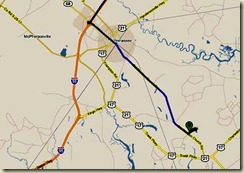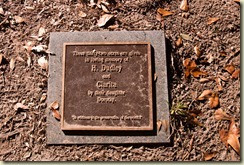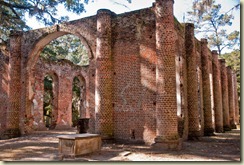Edisto Beach State Park is another delightful destination for RV campers and day visitors alike. Covering more than 1,250 acres, the Park boasts two campgrounds. One right on the Atlantic ocean; the other inland a ways, providing a very different environment. Have a look at both when you visit. It’s like visiting two different Parks.
I’ve visited and written about Edisto Beach State Park several times in the past. [Use the search box on the CarolinaConsidered Project website homepage to access those earlier articles, if you’re interested]. And it’s always a delight.
This time was special, though, since I had the opportunity to interview Edisto Interpretive Ranger, Ms. Andrea Grabman. Ms. Grabman offers us a unique perspective on Edisto and its environs.
This interview is in experimental format. A couple of weeks ago, our son, Andrew, suggested that I somehow arrange for photographs to display while interview sound files are playing.
That seemed like a good idea. So here’s the first effort. I’ve integrated the sound files into video clips, together with related photographs. Very much a work in progress. Let me know what you think of it.
Here’s Part One, where we learn about Ms. Grabman’s personal background, education, and training for her current position at Edisto Beach State Park.
Next, Ms. Grabman explains the role of the Park System’s interpretive rangers, and how their responsibilities differ from those of other Park Rangers.
I then asked Ms. Grabman to describe the Edisto Beach State Park and Edisto Island environment. Including both flora and fauna. Here’s her take on this interesting area of South Carolina.
Edisto Beach State Park is known for its support for nesting sea turtles. If you camp here near the shore during the nesting months, you’ll have to keep your lights off after dark. Ms. Grabman is responsible for this program at Edisto Beach State Park. Here she explains it for us.
Edisto Beach State Park maintains the 4,000-year-old American Indian shell mound found here, making efforts to slow its erosion, and to make it more accessible to the interested public. After hearing Ms. Grabman’s description of this site I’m sure you’ll be tempted to visit.
Finally, I asked Ms. Grabman to describe the programs she offers at Edisto Beach State Park through the Interpretive Center. Something is going on there nearly every day of the year. So check back often. Also, note that the programming is designed to appeal to all ages of visitor. From the youngest to elder-campers, like me. I was surprised by the diversity of the offerings.
Thanks again, Ms. Grabman, for an excellent contribution to the CarolinaConsidered Project.
Click here to return to the CarolinaConsidered Project website.
 Next time your travels take you down I-95, be sure to plan time to turn off at exit 38. Head southeast on the Yemassee Highway (also known as highway 68), toward Beaufort. It’s less than ten miles, and an interesting piece of road to boot! Morning is best, at least for me, but any time of day is fine.
Next time your travels take you down I-95, be sure to plan time to turn off at exit 38. Head southeast on the Yemassee Highway (also known as highway 68), toward Beaufort. It’s less than ten miles, and an interesting piece of road to boot! Morning is best, at least for me, but any time of day is fine.  Old Sheldon Church Road is a somewhat narrow two-lane road. Paved, but too narrow for roadside parking. Fortunately, 32 acres of land has been donated across the street that allows for ample parking.
Old Sheldon Church Road is a somewhat narrow two-lane road. Paved, but too narrow for roadside parking. Fortunately, 32 acres of land has been donated across the street that allows for ample parking. 



